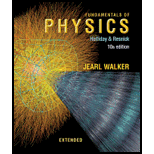
GO A very simplified schematic of the rain drainage system for a home is shown in Fig. 14-55. Rain falling on the slanted roof runs off into gutters around the roof edge; it then drains through downspouts (only one is shown) into a main drainage pipe M below the basement, which carries the water to an even larger pipe below the street. In Fig. 14-55, a floor drain in the basement is also connected to drainage pipe M. Suppose the following apply:
(1) the downspouts have height h = 11 m, (2) the floor drain has height h1 = 1.2 m, (3) pipe M has radius 3.0 cm, (4) the house has side width w = 30 m and front length L = 60 m, (5) all the water striking the roof goes through pipe M, (6) the initial speed of the water in a downspout is negligible, and (7) the wind speed is negligible (the rain falls vertically).
At what rainfall rate, in centimeters per hour, will water from pipe M reach the height of the floor drain and threaten to flood the basement?
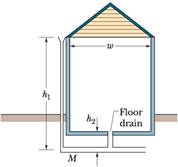
Figure 14.55 Problem 72.
Want to see the full answer?
Check out a sample textbook solution
Chapter 14 Solutions
Fundamentals of Physics Extended
Additional Science Textbook Solutions
Introduction to Electrodynamics
Conceptual Physical Science (6th Edition)
Conceptual Physics: The High School Physics Program
The Cosmic Perspective Fundamentals (2nd Edition)
Conceptual Physics (12th Edition)
An Introduction to Thermal Physics
- A horizontal pipe 10.0 cm in diameter has a smooth reduction to a pipe 5.00 cm in diameter. If the pressure of the water in the larger pipe is 8.00 104 Pa and the pressure in the smaller pipe is 6.00 104 Pa, at what rate does water flow through the pipes?arrow_forwardA garden hose with a diameter of 2.0 cm is used to fill a bucket, which has a volume of 0.10 cubic meters. It takes 1.2 minutes to fill. An adjustable nozzle is attached to the hose to decrease the diameter of the opening, which increases the speed of the water. The hose is held level to the ground at a height of 1.0 meters and the diameter is decreased until a flower bed 3.0 meters away is reached. (a) What is the volume flow rate of the through the nozzle when the diameter 2.0 cm? (b) What does is the speed of coming out of the hose? (c) What does the speed of the water coming out of the hose need to be to reach the flower bed 3.0 meters away? (d) What is be diameter of nozzle needed to reach be flower bed?arrow_forwardWater enters a smooth, horizontal tube with a speed of 2.0 m/s and emerges out of the tube with a speed of 8.0 m/s. Each end of the tube has a different cross-sectional radius. Find the ratio of the entrance radius to the exit radius.arrow_forward
- Check Your Understanding If the reservoir in Example 14.1 covered twice the area, but was kept to the same depth, would the dam need to be redesigned?arrow_forwardBird bones have air pockets to reduce their weight—this also gives them an average density significantly less than that of the bones of other animals. Suppose an ornithologist weighs a bird bone air and in water and finds its mass is 45.0 g ad its apparent mass when submerged is 3.60 g (assume the bone is watertight.)(a) What mass of is displaced? (b) What is the volume of the bone? (c) What is its average density?arrow_forwardA jet airplane in level flight has a mass of 8.64 104 kg, and the two wings have an estimated total area of 93.0 m2. If the speed of air under the wings is 226 m/s, what is the speed of the air over the wings? Assume air has a density of 1.29 kg/m3.arrow_forward
- A torricellian barometer consisting of an inverted tube of mercury in a dish of mercury. When the atmospheric pressure is exactly 1.00 atm, determine the height (h1) of the mercury in the tube?arrow_forwardThe weight of a 1200-kg car is supported equally by the four tires, which are inflated to the same gauge pressure. What gauge pressure is required so the area of contact of each tire with the road is 100 cm^2?arrow_forwardOne of the dangers of tornados and hurricanes is the rapid drop in air pressure that is associatedwith such storms. Assume that the air pressure inside of a sealed house is 1.02 atm when ahurricane hits. The hurricane rapidly decreases the external air pressure to 0.910 atm. A squarewindow in an outside wall of the house measures 2.02 m on each side. What net force (directedoutwards) is exerted on this window? (1 atm = 1.01 × 105 Pa.) A) 4.78 × 105 N B) 4.53 × 104 N C) 5.37 × 105 N D) 5.14 × 104 Narrow_forward
- A 40 cm of honey (denisty = 1.36 g/m3) in one arm of an open U-tube manometer is found to balance a certain column height of vegetable oil (density = 0.91 g/m3). What is the measure of the height of oil?arrow_forwardA horizontal pipe decreases uniformly from 150 mm diameter to 100 mm diameter in the direction of the flow of water. The pressure at the narrow section of the pipe is 2.2×105 N/m2, when the flow rate is 0.12 m3/s . Assuming there are no friction losses, calculate the pressure at the 150 mm side.arrow_forwardTo what height should a cylindrical vessel be filled with a homogenous liquid to make the force with which the liquid presses on the sides of the vessel equal to the force exerted by the liquid on the bottom of the vessel?arrow_forward
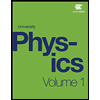 University Physics Volume 1PhysicsISBN:9781938168277Author:William Moebs, Samuel J. Ling, Jeff SannyPublisher:OpenStax - Rice University
University Physics Volume 1PhysicsISBN:9781938168277Author:William Moebs, Samuel J. Ling, Jeff SannyPublisher:OpenStax - Rice University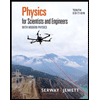 Physics for Scientists and Engineers with Modern ...PhysicsISBN:9781337553292Author:Raymond A. Serway, John W. JewettPublisher:Cengage Learning
Physics for Scientists and Engineers with Modern ...PhysicsISBN:9781337553292Author:Raymond A. Serway, John W. JewettPublisher:Cengage Learning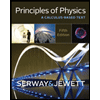 Principles of Physics: A Calculus-Based TextPhysicsISBN:9781133104261Author:Raymond A. Serway, John W. JewettPublisher:Cengage Learning
Principles of Physics: A Calculus-Based TextPhysicsISBN:9781133104261Author:Raymond A. Serway, John W. JewettPublisher:Cengage Learning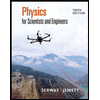 Physics for Scientists and EngineersPhysicsISBN:9781337553278Author:Raymond A. Serway, John W. JewettPublisher:Cengage Learning
Physics for Scientists and EngineersPhysicsISBN:9781337553278Author:Raymond A. Serway, John W. JewettPublisher:Cengage Learning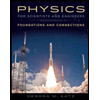 Physics for Scientists and Engineers: Foundations...PhysicsISBN:9781133939146Author:Katz, Debora M.Publisher:Cengage Learning
Physics for Scientists and Engineers: Foundations...PhysicsISBN:9781133939146Author:Katz, Debora M.Publisher:Cengage Learning




